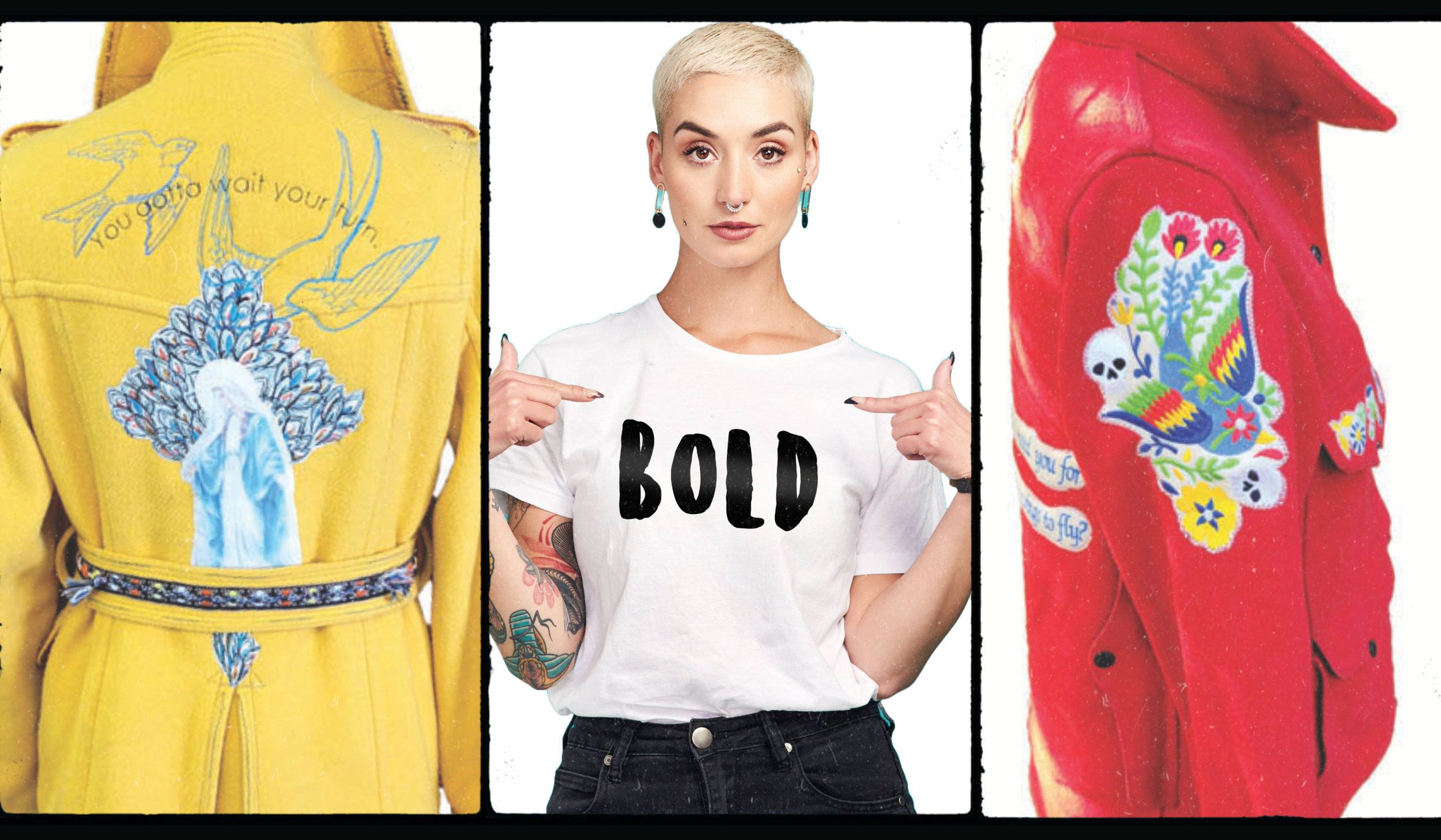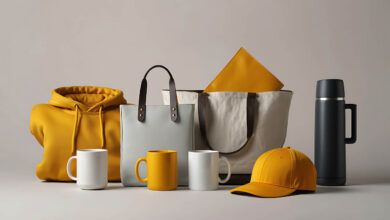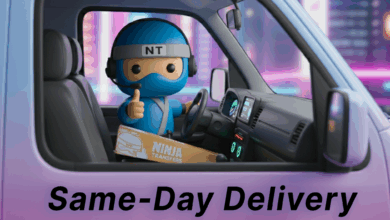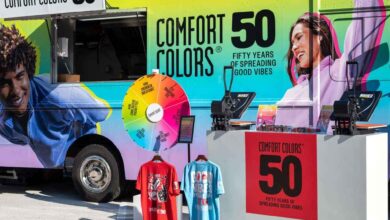When you think about womenswear these days, the first thing that may come to mind is momwear. Whether it’s a block “MAMA” on a sweatshirt, or a T-shirt proclaiming someone is a “Cheer Mom,” “Softball Mom,” or “Name-your-child’s-sport-or-activity Mom,” the word mom seems to be everywhere. Add in sweatshirts and T-shirts proclaiming the status of “Pet Mom” and it can seem like the entire world of womenswear is revolving around moms proclaiming what sort of mom they are. Perception does not always, however, equal reality.
While the world of momwear is a large one and a niche that many decorators work in profitably, it isn’t the only category of womenswear that is available, or the only one that generates substantial income. These days there are as many options for creating and selling types of womenswear as there are women to wear and use the items sold.
“Women deserve to feel like they are worth small and large luxuries,” said Sheila Ryan, designer and owner of Designs by Babymoon. “That it is more than OK to treat themselves, and that they have power just by being themselves to make a difference in the world.” Shops that can harness these feelings and take advantage of them can find working with womenswear very profitable. The trick is to find the niche that works for your shop and your skills and then to get really good at making items that fit that niche. If you’re interested in entering the womenswear market or want to expand the business you already have in that area, here are some options you can pursue.
Headwear is one area of womenswear in which decorators can do quite well. Hats offer plenty of opportunities for personalization. From a patch, to a monogram, to an embroidered name, to some simple flowers on the side, there are a number of hat decoration options. And women are wearing hats more than ever. Since they’re constantly being made aware of the dangers of sun damage and the effect of sun on aging skin, women have turned more and more to wearing hats as sun protection. It might be a baseball cap worn when hiking, a floppy straw sunhat worn on the beach, or a visor when golfing or playing tennis. And playing sports isn’t the only reason women will wear a hat. Some women have hats for bad hair days or when they just want to run out quickly and don’t want to mess with a specific hairstyle. Sometimes a hat is worn to make a statement or proclaim a cause. And, sometimes, hats are just fun. Any and all of these reasons could result in a need for a decorated hat and most will sell for a premium price.
In the realm of headwear, we must also remember the fertile ground of weddings. From caps with “Bride” or “Maid of Honor” on them to wedding veils, weddings can offer opportunities. Add in gifts for the bridal party, sashes or shirts for a bachelorette party, and sometimes, depending on how fancy the wedding is, hats for guests, and the opportunities increase tenfold. Working with weddings and wedding parties can be a profitable niche and if you specialize in that area, you can practice economies of scale by coming up with standard decoration techniques and options that you can offer to different brides and wedding parties again and again.
Another fun option in the womenswear category is jewelry. Free-standing lace (FSL) is popular in this area and is used to make earrings, bracelets, and necklaces. Sublimation and rhinestones are other popular options for jewelry as well. The attraction here is that pieces can be custom-made and personalized, at least in the case of sublimation, with pictures or phrases that have meaning to the wearer. FSL jewelry (especially earrings) can be designed in any shape or motif and customized through thread choice.
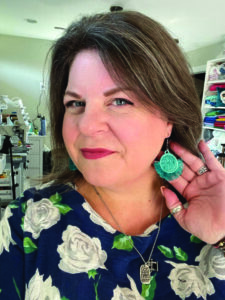
As Ryan puts it, “Women wear earrings to give themselves a little sparkle or lift, to show a bit of flair and individuality, and I have seen the smile that wearing pretty earrings gives to the wearer and the one engaging with the wearer.” All these jewelry options give women the opportunity to wear pieces that are unique and which they won’t see walking around on every other woman that goes by. Jewelry is also a great idea for shops that work in a certain niche and can create designs or items that speak to that niche. If a shop has booths at conventions or trade shows that cater to a particular niche interest, having small items like jewelry to display and sell can be a profitable sideline.
One area that can be fertile ground for womenswear is garments for women who enjoy activities or occupations that aren’t necessarily considered common for women. One area that stands out is hunting and fishing, which are often considered, in popular culture anyway, as activities that are primarily done by men. Most items made for women by major brands in this category tend to be pink, which doesn’t suit the tastes of every woman.
Some like wearing shirts that proclaim their allegiance to their chosen sport. Others are looking for durable, longwearing hunting or fishing apparel that isn’t just menswear cut small. And, contrary to what some merchandisers believe, not every woman loves pink or wants everything they wear or use to be in that color. Shops that can create unique, trendy, and well-fitting items for this niche could find they have a major profit center on their hands.
Bags can be a very profitable niche when it comes to womenswear. While men may carry a messenger bag or a tote bag on occasion, women rarely go anywhere without some sort of bag. Adding designs to bags makes them more fashionable and personal. It could be a duffle to carry gym clothes. Maybe it’s personalized totes to take to the grocery store to be more eco-conscious. Some women like and carry cloth or quilted purses with vibrant colors and fabrics. Again, it’s about having something that stands out a bit and is personalized and unique. Anyone can buy a purse off the shelf at Target. What’s more fun is carrying something that is special.
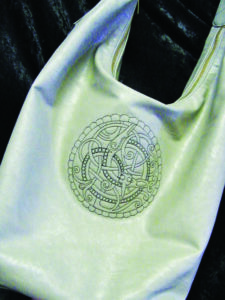
Upcycling or recycling is another trend that is big in the womenswear world. Patches can be used in this niche to great effect. They might be used to cover a hole and extend the life of a garment that needs some repair. Sometimes patches are just used to add some excitement to a garment which might otherwise be bland and without personality. Another big trend is buying plain thrift store garments and adding unique decoration to make the item more exciting and attractive.
As more people become eco-conscious and committed to making things last as long as possible, the attraction of options built for extending the life of a garment increases. Smaller shops that are willing to do decoration one-offs could find this a popular niche.
Another option in the one-off upcycling category that can do well is outerwear. Coats can be found at thrift stores or consignment shops and decorated on demand or with a theme. Embroidery is a popular option here, although, depending on the material of which the coat is made, other decoration options might be used.
If coats are decorated on demand, it would most likely be a one-off job and the idea would be to charge higher prices for the personalization. Another option would be to create a variety of coats around a theme and then either sell them online or offer them in a boutique.
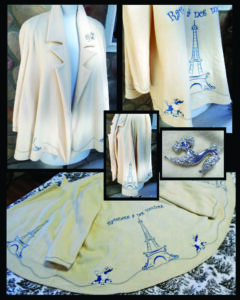
Patches are also a great option for womenswear that otherwise would be hard to decorate. If there are garments or items you don’t wish to take apart to embroider, or which would not stand up well to a heat press to be sublimated, you may be able to use a patch to add decoration. Patches can also be a faster way to add decoration to an item. If you use stock patches with proprietary designs, it could be as fast as pulling a patch out of stock and popping it on to a garment.
Keep in mind that part of the allure of buying a personalized piece, whatever sort of womenswear it might be, is that the buyer is often getting something that not everyone else will have.
As Stephanie Young of So Stephanie Says and Siser North America puts it, “I love selling unique items because I feel each of us are unique and different. I love making them because I can customize and personalize for the recipient.”
Whether it’s a limited-edition line that is only available at certain times or in certain places, a niche product that will only appeal to a certain part of the buying population, or a personalized piece meant for a specific person, the options for creating womenswear that appeals are vast. The trick is to find your niche and work to become expert at generating and supplying product for that niche.
